|
|||||||||||||||||
|
Agate Beads - A broad variety of agate beads, many of which are banded, was seen in the group. Their typical characteristics, seen throughout much of Asia, implies an Indian origin for many specimens. |
||
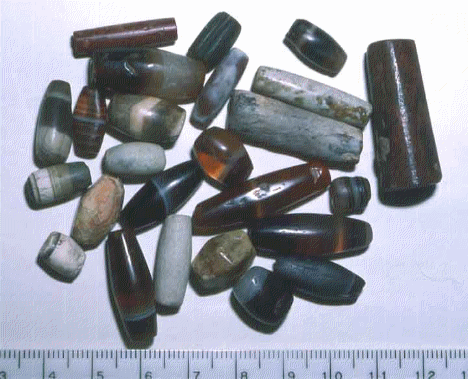 |
||
|
From my specimen collection, I would be hard-pressed to prove these six beads are not Indian imports. |
||
 |
||
|
This single tapered (or "fusiform") bead would be equally at-home in Algeria, Egypt, Israel, Jordan, Syria, Persia, Afghanistan, or even Tibet. It is most likely an Indian bead, sent to Burma. But until we have a CLEAR idea what Burmese beadmakers knew, and when they knew it, no one can be sure. |
||
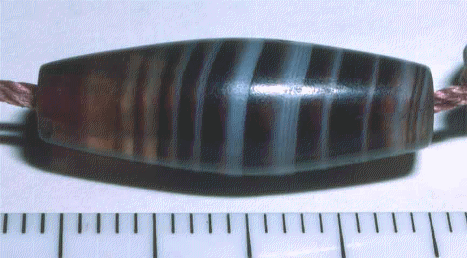 |
||
|
Carnelian Beads - The use of carnelian was commonplace, as exemplified by the thousands of specimens seen. Here, we see the group I acquired, that includes spherical shapes, as well as faceted types, cylinders, and even a small mollusk-shell effigy (unperforated) |
||
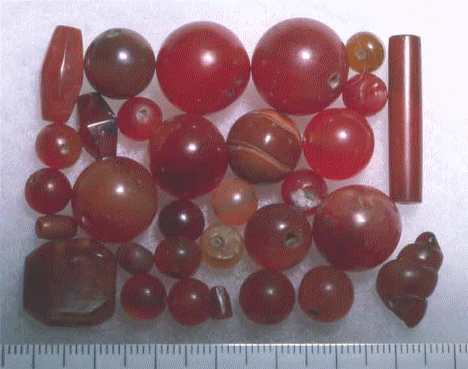 |
||
|
In contrast to the well-made spheres seen above, I noted a small group of beads that appeared to be more clumsy in manufacture. In these beads, one aperture is concave--indicating they had been drilled from one end, with the opposite end breaking away at the end of the drilling. This was not typical of India, but might be expected in a region that had not learned all of the tricks to beadmaking, or that was just learning them. |
||
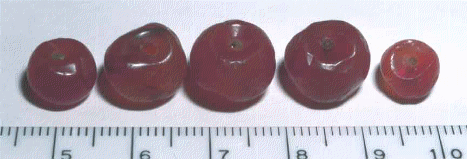 |
||
|
In addition to regular geometric shapes and recognizable animal shapes, I noted other curious types. These four beads appear to have conformations that suggest molar teeth. These were fairly numerous. |
||
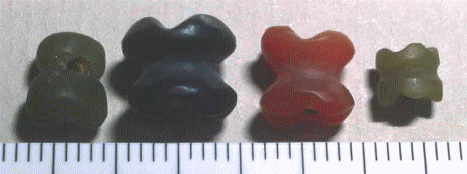 |
||
|
|||||||||||